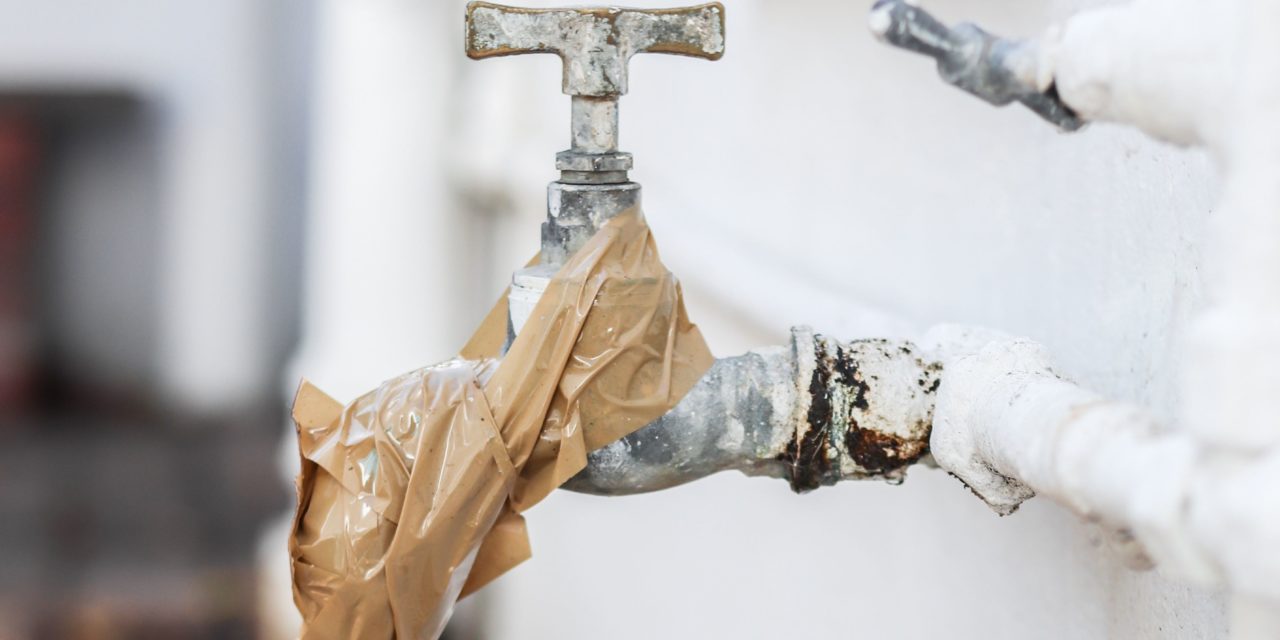Free flowing, odorless, clear water from our indoor taps is something that we all take for granted. But what happens when your tap water starts to have a metallic smell and taste, or the color takes on a reddish tint? Have you noticed your drains backing up or making a constant gurgling sound? Are you hearing creaky sounds when you turn the faucet on or off? Is the water pressure starting to degrade with each shower? In some cases, there may be a simple explanation, but in the worst cases, it may be time to consider repiping your home.
A certified C-36 licensed plumber can investigate your issues to determine if your plumbing system is reaching a critical state or “aging out” and needs to be replaced.
Early signs of an aging plumbing system that may need repiping include:
- Rusty Tap Water
- Low Water Pressure
- Recurring Leaks
- Extreme Temperatures
- Noisy Plumbing
Below we have listed the likely culprits.
Symptoms & Culprits
| Symptom | Possible Culprit |
|
Rusty Tap Water |
Corroded pipes. Aging plumbing system. Construction work nearby causing sediment to become loose and flow into water supply. |
| Low Water Pressure | Hard water build up is clogging pipes. |
| Recurring Leaks | Pinhole leaks due to acidic conditions reacting to the copper |
| Extreme Temperatures |
Water heater is too small for usage. Repipe so that pressure change is minimal Pressure – balancing valve needs replacing. Try a thermostatic mixing valve |
| Noisy Plumbing |
Excessive water pressure – should not exceed 60 psi. Wear on pipe interior |
Learn more about these symptoms below.
1. Rusty Tap Water
Your water should never emit a foul or unpleasant odor or taste, and it should never have a strange color. If you have “rusty” water, there is a high probability that a problem exists within your pipes. Rust is oxidized iron and can originate either from a water main or from your own plumbing. The reddish brown or “rusty” tint in water can be due to iron particles that break free from sediment inside. This condition is known as “corrosion” and can be indicative of an aging plumbing system. To further compound the issue, rusty water can be a source of bacterial contamination which can lead to health problems if not rectified.
Bear in mind that in some cases the discoloration of tap water can be the result of disturbances in the ground. Is there a construction project currently underway in your area? If this is the case, chances are your water will remain discolored temporarily and will clear up once construction ceases. Call a C-36 certified plumber to get a thorough inspection of your plumbing system to determine the underlying issue of discolored or foul-smelling tap water.
2. Low Water Pressure
Low water pressure is usually caused by aging, clogged pipes and is common in areas with “hard water”, which is heavy in minerals, such as calcium and magnesium. Hard water will clog plumbing systems and lead to issues with soaps and detergents not dissolving effectively. The minerals can build up in the pipes, and thus impede the free flow of water, thereby causing a reduction in water pressure.
You can check your water pressure coming into your home by reading the meter closest to your water shutoff valve from the water main. An ideal reading should be between 45 and 55 psi. If the low-pressure issue becomes a constant state, then it may be time to call a plumber, as there may be a larger issue that needs to be addressed.
3. Recurring Leaks
Constant pinhole leaks in copper piping can be indicative of a major problem with the plumbing system in your home. A common cause of constant pinhole leaks are mixed metals in the plumbing and acidic water, the latter of which is a source of corrosion for copper material. Over time, aging pipes will begin to develop leaks due to “pitting”, or localized corrosion. There are three types of pitting, which can be distinguished by the pH levels of water flowing through the pipes:
- Type One pitting is the result of hard water that has a pH level of 7-7.8. This is usually associated with cold water.
- Type Two is soft water pitting when the water has a pH below 7.2
- Type Three pitting is the result of cold water and a pH level over 8.0 and can cause complete pipe blockage of water flow.
Aging copper pipes will begin springing leaks with increased frequency, if pitting becomes an issue, even if you have not reached their average lifespan of 50-70 years. Unfortunately, aggressive acidic water can cause untold damage that should be assessed quickly to determine corrective action. This may include replacing your system rather than patch repairs.
4. Extreme Temperatures
Thermostatic mixing valves can be pre-set to allow your water temperatures to never reach above a certain level, ensuring an even temperature throughout your shower. However, even if you have a regulator to guard against fluctuations or spikes in water temperature, a clogged pipe can reduce or stop the flow of water, thereby quickly changing hot water to cold.
The phenomenon can also occur when there is more than one faucet in use simultaneously causing a change in temperature in one outlet versus the other. The solution may involve repiping to a different diameter of piping. When velocity or rate of change of water is increased, the pressure of the water drops. Increase the diameter of your piping, so that the pressure change is minimal. This will ensure that an even flow of hot water is delivered throughout the plumbing system at a given time.
5. Noisy Plumbing
Older pipes will often sound creaky or loud when water is turned off. This is occurs when high pressure inside the pipes causes trapped water inside to bang against the shut off valve and the pipe walls. You can reset the pressure chamber to alleviate this issue, but sometimes a plumbing cacophony is indicative of more advanced problems.
Oftentimes, when this condition has been allowed to occur for years, you may have introduced stress on the piping material and may have already caused damage, which will result in leaks and damage to connected pumps, valves and controls throughout your water supply infrastructure. The wearing away of the pipe’s interior will require repiping.
Next Steps
Plumbing is often taken for granted and generally we never give our household plumbing a second thought until something goes wrong. Scheduling regular maintenance with a licensed plumbing professional for annual inspections, will allow you to enjoy a healthy supply of free-flowing water without disruption or stress.
Should you pass the point of general maintenance and require the services of a repiping specialist, inspections for signs of plumbing issues should range from $300 for a visual inspection to $500 for both visual and camera inspections. The cost to repipe, according to House Logic, can range between $2.6 – $6.6 per square foot.







